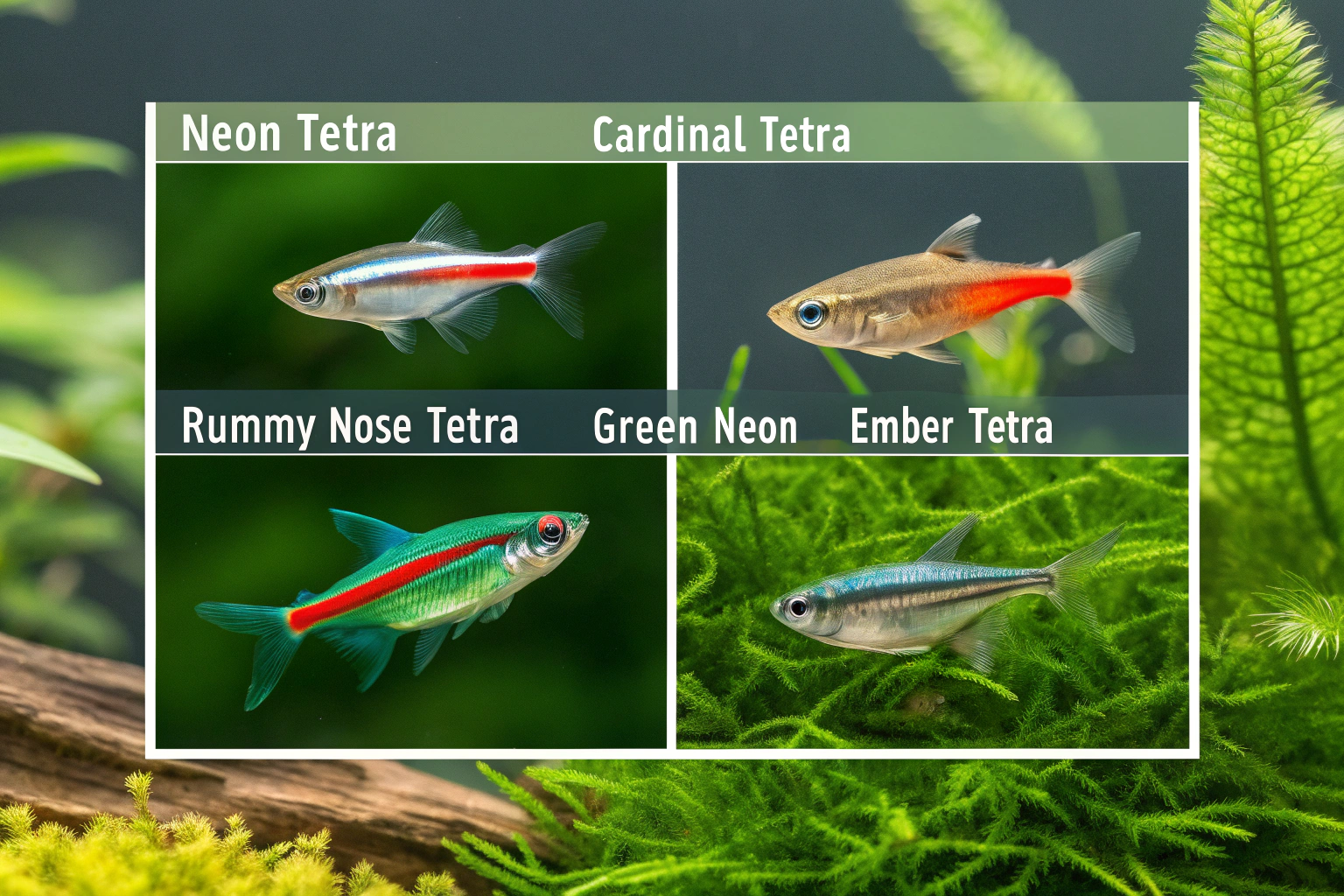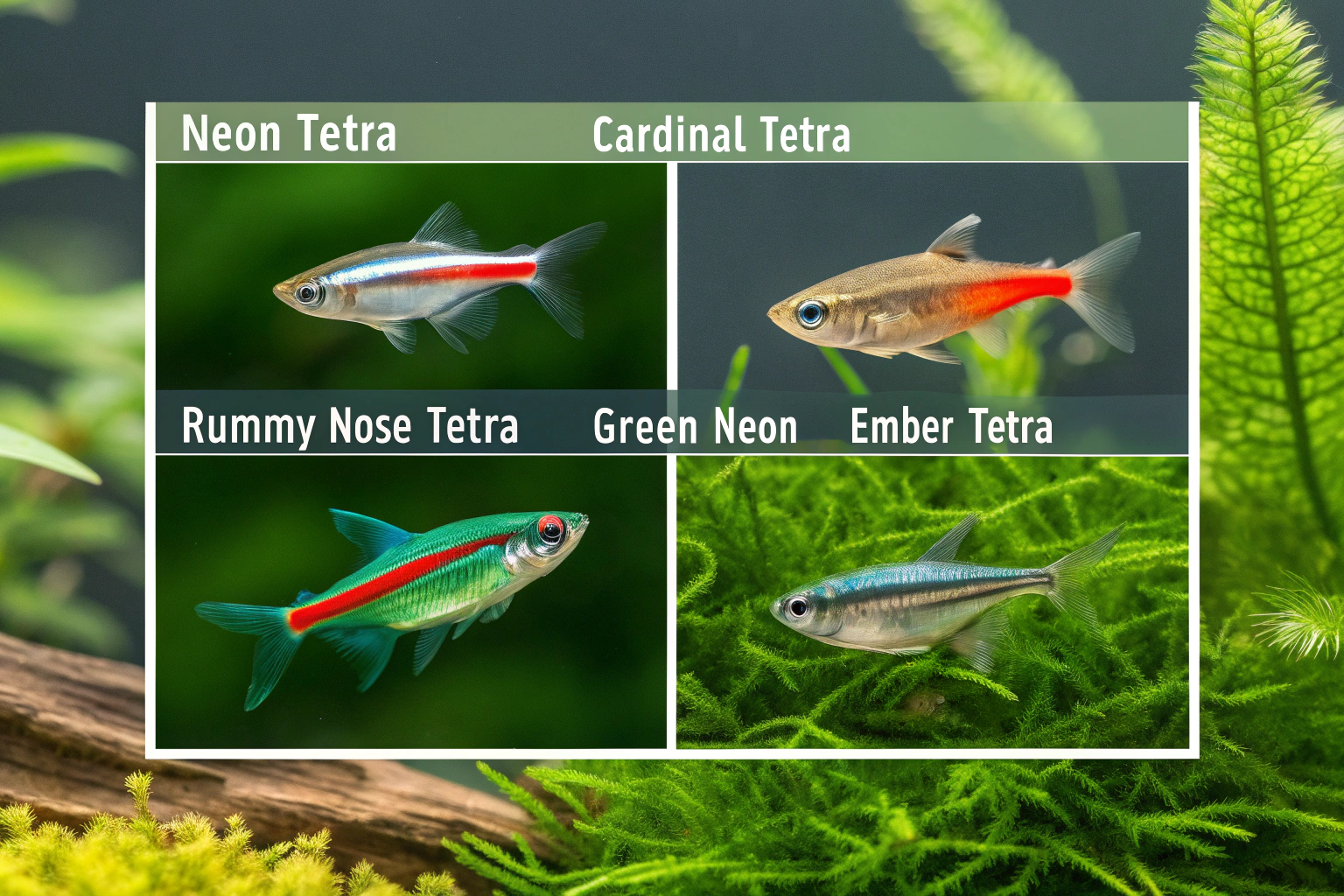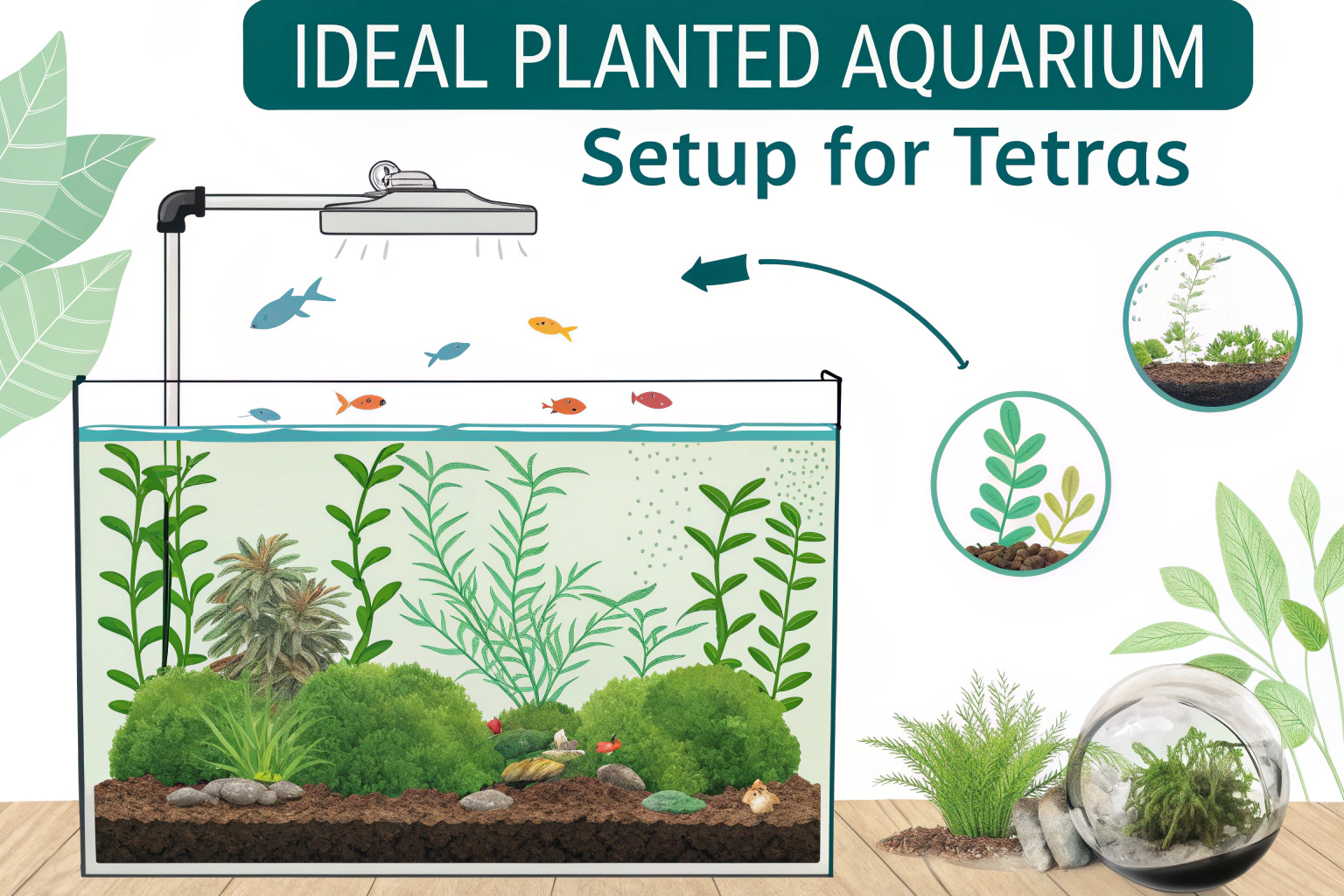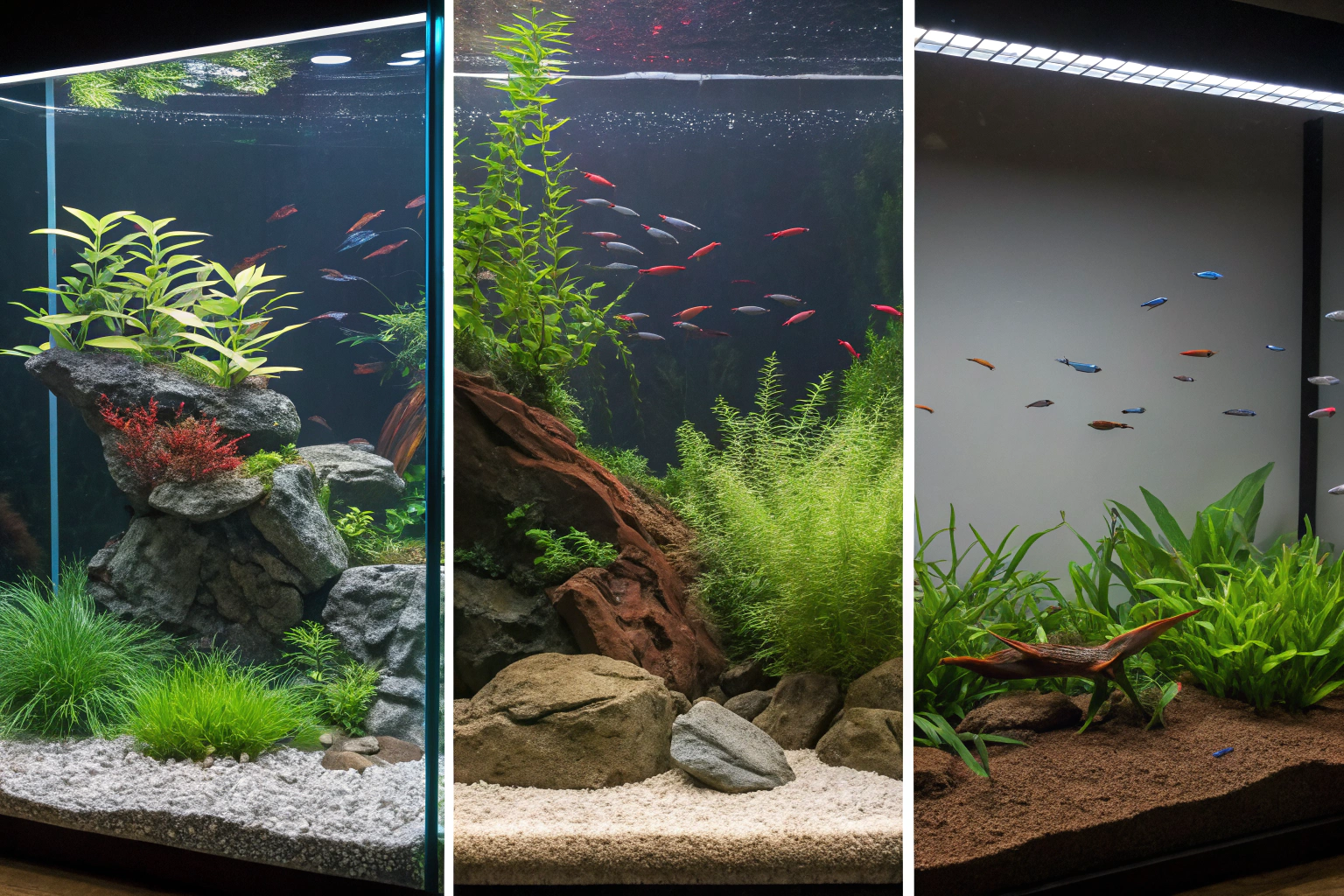Which Tetra Fish Breeds Are Best for Planted Aquarium Setups?
This post may contain affiliate links.
Planted aquariums represent the pinnacle of freshwater aquascaping, combining lush aquatic vegetation with carefully selected fish species to create stunning underwater landscapes. Tetra fish are among the most popular choices for planted tanks due to their vibrant colors, peaceful nature, and compatibility with aquatic plants. However, not all tetra species are equally suited for planted aquarium environments.
Selecting the right tetra breeds for your planted setup requires understanding their behavior, environmental needs, and interaction with aquatic vegetation. The best tetras for planted aquariums are those that enhance the natural beauty of the aquascape while thriving in the specific conditions these tanks provide.

Understanding Planted Aquarium Requirements
Planted aquariums differ significantly from traditional fish tanks in their environmental parameters and maintenance requirements. These ecosystems typically feature:
- Higher lighting intensity for photosynthesis
- CO2 supplementation to promote plant growth
- Nutrient-rich substrates supporting root development
- Stable water parameters crucial for both plants and fish
- Minimal substrate disturbance to protect plant roots
Professional aquascaping services emphasize that successful planted tanks require fish species that complement rather than disrupt these carefully balanced conditions.
Top Tetra Species for Planted Aquariums
Neon Tetras (Paracheirodon innesi)
Neon tetras are the quintessential planted aquarium fish, offering brilliant blue and red coloration that creates stunning contrast against green vegetation. Their small size (1.5 inches) and peaceful temperament make them ideal for densely planted tanks.
Why They Excel in Planted Tanks:
- Minimal bioload: Less waste production supports plant health
- Mid-water swimming: Doesn’t disturb substrate or plant roots
- School behavior: Creates dynamic movement without plant damage
- pH tolerance: Adapts well to slightly acidic planted tank conditions
Ideal School Size: 10-15 individuals Tank Requirements: 10+ gallons, soft acidic water Plant Compatibility: Excellent with all aquatic plants
Cardinal Tetras (Paracheirodon axelrodi)
Cardinal tetras are often considered the premium version of neon tetras, featuring more extensive red coloration and slightly larger size. They’re particularly striking in heavily planted Dutch-style aquascapes.
Planted Tank Benefits:
- Enhanced coloration: Planted tank lighting intensifies their natural colors
- Gentle nature: Never damages delicate plant leaves
- Stable behavior: Consistent schooling without erratic movements
- Long lifespan: 5+ years with proper planted tank conditions
Water Parameters: Soft, acidic water (pH 5.0-6.8) Temperature Range: 72-78°F Compatibility: Perfect for high-tech planted systems
Rummy Nose Tetras (Hemigrammus rhodostomus)
Rummy nose tetras are prized by aquascapers for their exceptionally tight schooling behavior and distinctive red noses that serve as natural water quality indicators. Their schooling creates mesmerizing displays against planted backgrounds.
Aquascaping Advantages:
- Tight schooling: Creates cohesive visual impact
- Water quality indicators: Red noses fade with poor conditions
- Plant-safe behavior: Never nibbles on vegetation
- Aesthetic appeal: Black and white striped tails complement any plant color
School Requirements: Minimum 8-10 individuals for tight schooling Tank Size: 20+ gallons for optimal display Plant Types: Excellent with stem plants and carpeting species
Green Neon Tetras (Paracheirodon simulans)
Green neon tetras are smaller cousins of traditional neons, perfectly suited for nano planted aquariums. Their subtle green-blue coloration provides elegant contrast without overwhelming delicate aquascapes.
Nano Tank Specialists:
- Tiny size: Under 1 inch, perfect for small planted tanks
- Subtle beauty: Doesn’t compete with plant aesthetics
- Low bioload: Minimal impact on nutrient cycles
- Hardy nature: Tolerates planted tank parameter fluctuations
Ideal Applications: Nano tanks 5-10 gallons Schooling: 6-8 individuals sufficient for small spaces Plant Compatibility: Excellent with mosses and small foreground plants
Ember Tetras (Hyphessobrycon amandae)
Ember tetras bring warm orange coloration to planted aquariums, creating beautiful contrast with green vegetation. Their small size and peaceful nature make them ideal for heavily planted community tanks.
Planted Tank Features:
- Warm coloration: Orange hues complement green plants beautifully
- Substrate respect: Never disturbs carpeting plants
- Community friendly: Compatible with other peaceful planted tank species
- Active swimmers: Adds life to planted displays without plant damage
Tank Requirements: 10+ gallons, stable parameters Schooling Behavior: Best in groups of 8-12 Plant Interaction: Beneficial relationship with all plant types

Specialized Tetras for Advanced Planted Systems
Crystal Red Tetras (Hyphessobrycon sweglesi)
These premium tetras feature stunning red and clear coloration that’s particularly striking under planted aquarium lighting. They’re ideal for high-end aquascapes where color impact is crucial.
Premium Features:
- Exceptional coloration: Brilliant reds under plant lights
- Calm temperament: Never disturbs careful aquascaping
- Lighting response: Colors intensify under proper spectrum lighting
- Rarity value: Adds exclusivity to advanced setups
Lemon Tetras (Hyphessobrycon pulchripinnis)
Lemon tetras provide subtle yellow accents that complement both green plants and colorful tank mates. Their understated beauty works particularly well in natural-style aquascapes.
Natural Aquascape Benefits:
- Subtle coloration: Doesn’t overwhelm natural plant colors
- Peaceful nature: Ideal for biotope-style planted tanks
- Plant compatibility: Excellent with South American plant species
- Long-term stability: Established schools remain consistent
Plant-Damaging Tetras to Avoid
While most tetras are plant-safe, certain species can damage aquatic vegetation and should be avoided in planted setups:
Buenos Aires Tetras
These large, boisterous tetras are notorious plant eaters that will systematically destroy soft-leaved plants. Expert planted tank forums consistently warn against including them in planted aquariums.
Silver Tip Tetras
While generally peaceful, silver tip tetras occasionally nibble on delicate plant leaves, particularly new growth on stem plants.
Blind Cave Tetras
Their aggressive feeding behavior and lack of visual cues can lead to accidental plant damage and substrate disruption.

Optimizing Tetra Health in Planted Aquariums
Water Parameter Management
Planted aquariums often maintain specific water conditions that benefit both plants and tetras:
- pH Range: 6.0-7.0 (slightly acidic for most plants)
- Temperature: 72-78°F (optimal for both plants and tetras)
- Hardness: Soft to moderate (promotes plant nutrient uptake)
- CO2 Levels: 20-30 ppm (benefits plants without harming fish)
Feeding Strategies
Proper feeding in planted tanks requires careful balance to avoid excess nutrients that promote algae growth:
- Small frequent meals: Reduces waste accumulation
- High-quality foods: Minimizes nutrient pollution
- Plant-safe supplements: Avoid copper-containing medications
- Varied diet: Includes vegetable matter that complements plant environment
Professional aquarium nutritionists recommend feeding schedules that support both fish health and plant growth cycles.

Aquascaping Design Considerations
Creating Natural Swimming Paths
Successful planted aquariums provide clear swimming corridors for tetra schools while maintaining dense plant coverage:
- Open midwater areas: Allow natural schooling behavior
- Plant height variation: Creates depth and swimming levels
- Strategic plant placement: Guides fish movement patterns
- Maintenance access: Ensures long-term aquascape sustainability
Color Coordination
The best tetra choices complement your aquascape’s color palette:
- Green plants: Red tetras (cardinals, embers) provide striking contrast
- Red plants: Blue/green tetras (neons, green neons) offer balance
- Mixed colors: Subtle species (lemons, crystals) work universally
Lighting Considerations
Planted aquarium lighting affects both plant growth and tetra coloration:
- Full spectrum LED: Enhances both plant health and fish colors
- Photoperiod timing: 8-10 hours supports plants without stressing fish
- Intensity gradients: Creates natural light distribution
- Color temperature: 6500-8000K optimal for plant growth and fish display
Advanced Planted Tank Tetra Combinations
Dutch Style Aquascapes
For formal Dutch-style planted tanks, consider these combinations:
- Primary school: 15-20 cardinal tetras
- Accent group: 8-10 rummy nose tetras
- Foreground detail: 6-8 green neon tetras
Nature Style Aquascapes
Natural-style tanks benefit from more subtle combinations:
- Main group: 12-15 ember tetras
- Supporting cast: 8-10 lemon tetras
- Cleanup crew: Small school of otocinclus catfish
Iwagumi Style
Minimalist Iwagumi layouts work best with single species:
- Featured school: 20+ neon tetras for maximum impact
- Alternative: Large school of green neon tetras for subtle elegance
Long-term Success Strategies
Quarantine Protocols
New tetras should always be quarantined before introduction to established planted systems:
- Minimum quarantine: 2-4 weeks observation
- Health screening: Check for diseases that could affect entire system
- Acclimation process: Gradual adjustment to planted tank parameters
Population Management
Maintaining stable tetra populations in planted tanks requires ongoing attention:
- School size maintenance: Replace lost individuals promptly
- Growth accommodation: Plan for increasing bioload as fish mature
- Breeding consideration: Manage natural reproduction in stable environments
Certified aquascaping professionals provide specialized services for maintaining tetra populations in planted aquarium systems.
Troubleshooting Common Issues
Plant Damage Investigation
If plants show damage in tetra-inhabited tanks:
- Observe feeding behavior: Ensure adequate nutrition
- Check water parameters: Stress can trigger plant nibbling
- Assess tank balance: Overcrowding may cause behavioral changes
- Species verification: Confirm all fish are plant-safe varieties
Color Loss in Tetras
Fading colors in planted tank tetras often indicate:
- Lighting issues: Insufficient or inappropriate spectrum
- Water quality problems: Parameter instability
- Stress factors: Overcrowding or incompatible tank mates
- Nutritional deficiency: Poor diet quality
Conclusion
The best tetra fish breeds for planted aquarium setups are those that enhance the aquascape’s beauty while thriving in plant-optimized conditions. Neon tetras, cardinal tetras, rummy nose tetras, green neon tetras, and ember tetras represent the top choices for most planted aquarium applications.
Success with tetras in planted tanks depends on understanding their specific needs, maintaining appropriate water parameters, and selecting species that complement your aquascaping goals. Avoid plant-damaging species like Buenos Aires tetras, and focus on peaceful, small-to-medium sized varieties that respect both plants and other tank inhabitants.
Whether you’re creating a high-tech Dutch aquascape or a natural biotope display, the right tetra species will add dynamic movement, stunning color, and living beauty to your planted aquarium. Professional aquascaping consultants can provide personalized recommendations based on your specific setup and aesthetic goals.
With proper planning, appropriate species selection, and consistent care, tetras and aquatic plants create harmonious ecosystems that showcase the best of both aquatic gardening and fishkeeping.
